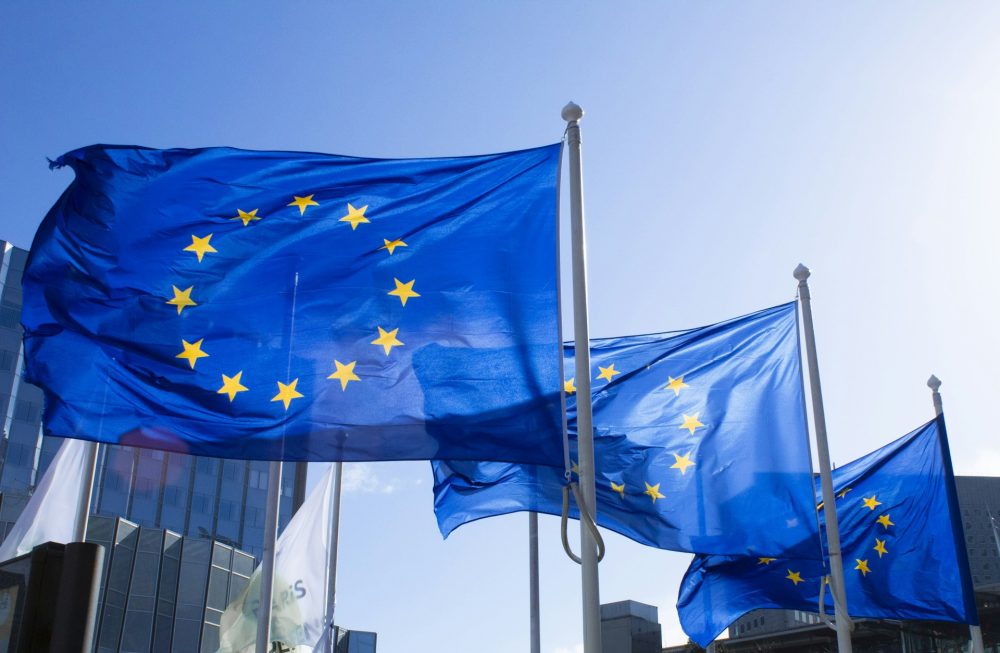Crypto
The three ways blockchain makes the supply chain more secure
One solution that small localized businesses apply to fulfil the constant need of preventing one’s business from any threat emerging from the supply chain cycle or from any of the involved party in the cycle, is limit the supply partnerships number. Blockchain technology permits the tracing of the origin and movement of the goods until they reach their destination, with the help of tokenized assets

The 2013 Target hack resulted from a spear-phishing expedition from one of the contractors of the firm’s end. It led to a loss in over 40 million credit and debit card information, and various senior executives – along with the Target CEO – losing their post, and a heart wrenching financial loss amounting to over $250m.
Correspondingly, the NotPetya virus, which had hit a number of industry giants like FedEx, Maersk, also got activated when several Ukrainian businesses compromised their systems because of a spiteful update from a famous accounting software package.
When we talk about the supply chain and the amount of exposure that comes attached with it, businesses have to be very wary of the associated risks like fraud, disruption, quality failures, and other contingencies. Add to this the new wave of risks that comes at the back of being digitally connected and the risk factor suddenly increases by manifold.
Irrespective of whether the business is of e-commerce nature, which has to abide by the next day delivery policy or whether the business is based on the import of meat products, or even if it is as uncomplicated as food delivery business, there is always an involvement of supply chain in one capacity or another.
One solution that small localized businesses apply to fulfil this constant need of preventing one’s business from any threat emerging from the supply chain cycle or from any of the involved party in the cycle, is – limit the supply partnerships number. However, the present day digital economy mandates that the level to which a business thrives is directly proportional to how wide its network is. And, above everything else, you restricting yourself to a few supply chain partners wouldn’t stop your vendors from having a wide supply chain network of their own.
So, what is the solution here? What is the way out for businesses to ensure that their supply chain cycle remains untampered with?
The Answer is – Blockchain.
Conceived for its application in the finance industry and popularized by the advent of Blockchain App Development, the fact that the technology enables sharing and unalterable recording of transactions and events, has placed Blockchain in a number of industries beyond finance.
There are three areas in which businesses are incorporating blockchain in their supply chain management cycle. Let us look at all of them, one by one.
In the field of tracking down consignments
By giving the verified parties an access to the trusted, real-time data, Blockchain not only brings in secure transactions in the supply chain cycle but also reduces the instances for counterfeit goods, fraud, and theft.
And as there is an absence of a centralized server location, the chances of unscrupulous individuals hacking the system for carrying out security threats and malicious cyber-attacks is also automatically eradicated.
Following its rendezvous with the NotPetya virus event, Maersk has collaborated with IBM for building a blockchain platform for tracking down thousands of the shipping containers all around the world. By digitizing the whole supply chain domain end-to-end, both the firms are aiming to make it easy to transfer the goods from one trading zone to another.
Their platform is designed around providing visibility across the complete supply chain to ensure that every party is able to securely share their information about the shipping events. They will be adding Blockchain in the picture to let companies safely submit, validate, and then approve the documents across the organization boundaries.
Blockchain-based smart contracts would ensure that the required criterias are met before the payment is made or before the shipment is moved from Destination A to Destination B.
In the field of custom administration
Another area of supply chain cycle where businesses are mixing the disruptive Blockchain technology with their mobile app security plan is customs administration. One of the primary tasks of a nation’s Custom Department is to prevent counterfeit products from entering the nation while making sure that there is no interference with the flow of commerce and that the end user never suffers.
Now, ensuring all of this in an already slow cross border transaction system is a challenge that every business that deals with international goods, faces.
Blockchain technology permits the tracing of the origin and movement of the goods until they reach their destination, with the help of tokenized assets. When a product is developed, a digital token is created by an entity, which is responsible for the authentication of the product origin – the certificate of which is feeded in the blockchain to make it immutable.
Once the certification is made, all the product movements and the ownership details are feeded into the blockchain. By recording all the data in one register, which is shared along with a number of stakeholders, allows efficient control of the flow of goods. Also, centralized registers eliminate the inefficiencies which are related to the storage and processing of similar information by multiple bodies, copying of processes, and the instances of manual data entry.
With the access to trace down both – the origins and movement of the goods that they procure, retailers and distributors are able to ensure that there are zero illegal practices involved in any stage of the whole supply chain cycle.
In the field of securing invoices
Blockchain has emerged as a useful tool for safeguarding the financial transaction documents such as invoices, as it guarantees that it is impossible to change the invoices – intentionally and unknowingly – from when the supplier submits the document till the buyer processes it. All the invoice transactions, once loaded on the blockchain, get checked and validated by every single participant, which removes the chance of corruption all throughout the complete invoicing process.
Peter Kinder, the CTO of Wax Digital, an e-procurement specialist explains the point further:
“It enables data to be distributed to known members within an agreed network. Each item of data – for example documents, information records, transaction receipts – is shared and stored with every member in the network who can accept its authenticity. Once an item has been created it can’t be copied or changed and it becomes a data ‘block’ that is added sequentially into the blockchain database.”
_
(Featured image by Karolina Grabowska via Pexels)
DISCLAIMER: This article was written by a third party contributor and does not reflect the opinion of Born2Invest, its management, staff or its associates. Please review our disclaimer for more information.
This article may include forward-looking statements. These forward-looking statements generally are identified by the words “believe,” “project,” “estimate,” “become,” “plan,” “will,” and similar expressions. These forward-looking statements involve known and unknown risks as well as uncertainties, including those discussed in the following cautionary statements and elsewhere in this article and on this site. Although the Company may believe that its expectations are based on reasonable assumptions, the actual results that the Company may achieve may differ materially from any forward-looking statements, which reflect the opinions of the management of the Company only as of the date hereof. Additionally, please make sure to read these important disclosures.

-

 Biotech2 weeks ago
Biotech2 weeks agoAsebio 2024: Driving Biotechnology as a Pillar of Spain and Europe’s Strategic Future
-

 Business9 hours ago
Business9 hours agoDow Jones Nears New High as Historic Signals Flash Caution
-

 Business1 week ago
Business1 week agoFed Holds Interest Rates Steady Amid Solid Economic Indicators
-

 Fintech5 days ago
Fintech5 days agoMuzinich and Nao Partner to Open Private Credit Fund to Retail Investors
























